Homemade Tamarindo Candy Recipe: Sweet & Tangy Tropical Joy
Sweet and tangy tamarind candy dances across taste buds with a zesty punch that captures Mexican street food magic.
This homemade tamarindo candy recipe delivers a nostalgic treat bursting with vibrant flavor.
Sticky, sweet, and slightly sour, these candies offer a delightful balance of intense taste sensations.
Crafted with simple ingredients, the recipe brings authentic street market deliciousness straight to your kitchen.
Soft yet chewy, these treats will transport you to bustling markets with every bite.
You’ll fall in love with the rich, complex notes that make this candy an irresistible snack.
Prepare to indulge in a true culinary adventure that celebrates the bold spirit of traditional Mexican sweets.
Sweet-Spicy Mexican Treat Unique Charm
Ingredients for Sweet-Spicy Mexican Treat
Base Ingredients:Flavor Enhancers:Additional Ingredients:Steps for a Sweet-Spicy Treat
Step 1: Prepare Tamarind Base
Grab your fresh tamarinds and gently peel away the outer skin.
Pour steaming hot water over the peeled tamarinds, ensuring they’re completely submerged.
Let the tamarinds soak and soften for about 20 minutes, giving them an occasional stir to help break down the pulp and release their rich, tangy flavor.
Step 2: Break Down Tamarind Pulp
Using your hands or a fork, carefully break the softened tamarinds into small chunks.
Meticulously remove the tough fibers, leaving behind the seeds.
This process helps create a smooth, consistent texture for your Mexican treat.
Step 3: Create Flavor Fusion
Gather your remaining ingredients:Combine all ingredients in a mixing bowl, working them together until a smooth, sticky paste forms.
The mixture should have a rich, complex flavor that balances sweet and spicy notes.
Step 4: Chill and Set
Transfer the tamarind mixture to the refrigerator.
Let it cool and firm up for about 20 minutes.
This chilling time helps the flavors meld together and makes the mixture easier to handle.
Step 5: Shape Delightful Treats
Wet your hands with cool water to prevent sticking.
Carefully roll the chilled tamarind mixture into small, bite-sized balls.
The moisture on your hands will help create smooth, uniform shapes.
Step 6: Add Final Flavor Coating
Prepare two separate plates:Use spoons to gently roll each tamarind ball in your chosen coating.
This adds an extra layer of flavor and creates a beautiful, tempting exterior for your Mexican sweet-spicy treat.
Tips for Sweet-Spicy Flavor Balance
Mexican Treat Variations for Fun
Serving Sweet-Spicy Treats
Storage for Mexican Treats
FAQs
Tamarinds are tropical fruits with a tangy, sweet-sour flavor native to Africa but widely used in Mexican cuisine, with a sticky pulp surrounding hard seeds.
Yes, you can roll the balls in plain sugar for a milder version, though the chile adds a traditional Mexican kick to the sweet-spicy treat.
When stored in an airtight container in the refrigerator, these treats can stay fresh for about 5-7 days.
Tamarinds are rich in vitamins, minerals, and antioxidants, making them a relatively nutritious sweet snack when consumed in moderation.
Print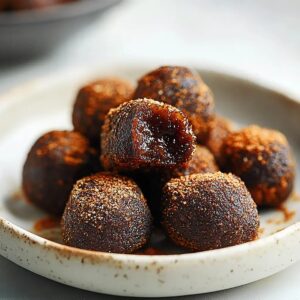
Tamarindo Candy Recipe
- Total Time: 40 minutes
- Yield: 8 1x
Description
Sweet and tangy Tamarindo Candy brings Mexican street flavor home with its perfect balance of sour and sugary notes. Homemade treats like these connect you to authentic culinary traditions and delightful cultural experiences.
Ingredients
Main Ingredients:
- 1 pound (454 grams) tamarind pods, peeled
- 16 ounces (454 grams) white sugar
- 1 cup (240 milliliters) hot water
Seasoning and Thickening Agents:
- 2 tablespoons (30 milliliters) chili lime seasoning or tajin
- 4 tablespoons (60 milliliters) cornstarch
Coating:
- Extra sugar
- Extra chili powder
Instructions
- Immerse the peeled tamarinds in steaming water, allowing them to soften for 20 minutes while gently stirring at intervals.
- Dismantle the tamarinds into small fragments, meticulously extracting the fibrous elements while preserving the seeds.
- Blend the processed tamarind mixture with remaining ingredients, creating a cohesive, smooth paste with uniform consistency.
- Transfer the prepared mixture into the refrigerator, letting it chill and solidify for approximately 20 minutes.
- Moisten palms with water to prevent sticking, then carefully shape the chilled mixture into uniform, compact spheres.
- Utilize spoons to gently tumble each formed ball through either granulated sugar or finely ground chile powder, ensuring complete and even coverage.
Notes
- Tamarind softens perfectly when soaked in hot water, releasing its tangy flavor and making it easier to process.
- Use gloves when handling the paste to prevent sticky residue on your hands and maintain a clean preparation surface.
- Adjust spice levels by mixing different chile powders like ancho, guajillo, or cayenne for personalized heat intensity.
- Store these treats in an airtight container in the refrigerator for up to a week, allowing flavors to meld and develop a richer taste profile.
- Prep Time: 40 minutes
- Cook Time: 0 minutes
- Category: Snacks, Desserts
- Method: Rolling
- Cuisine: Mexican
Nutrition
- Serving Size: 8
- Calories: 290
- Sugar: 36 g
- Sodium: 0 mg
- Fat: 0 g
- Saturated Fat: 0 g
- Unsaturated Fat: 0 g
- Trans Fat: 0 g
- Carbohydrates: 73 g
- Fiber: 2 g
- Protein: 1 g
- Cholesterol: 0 mg

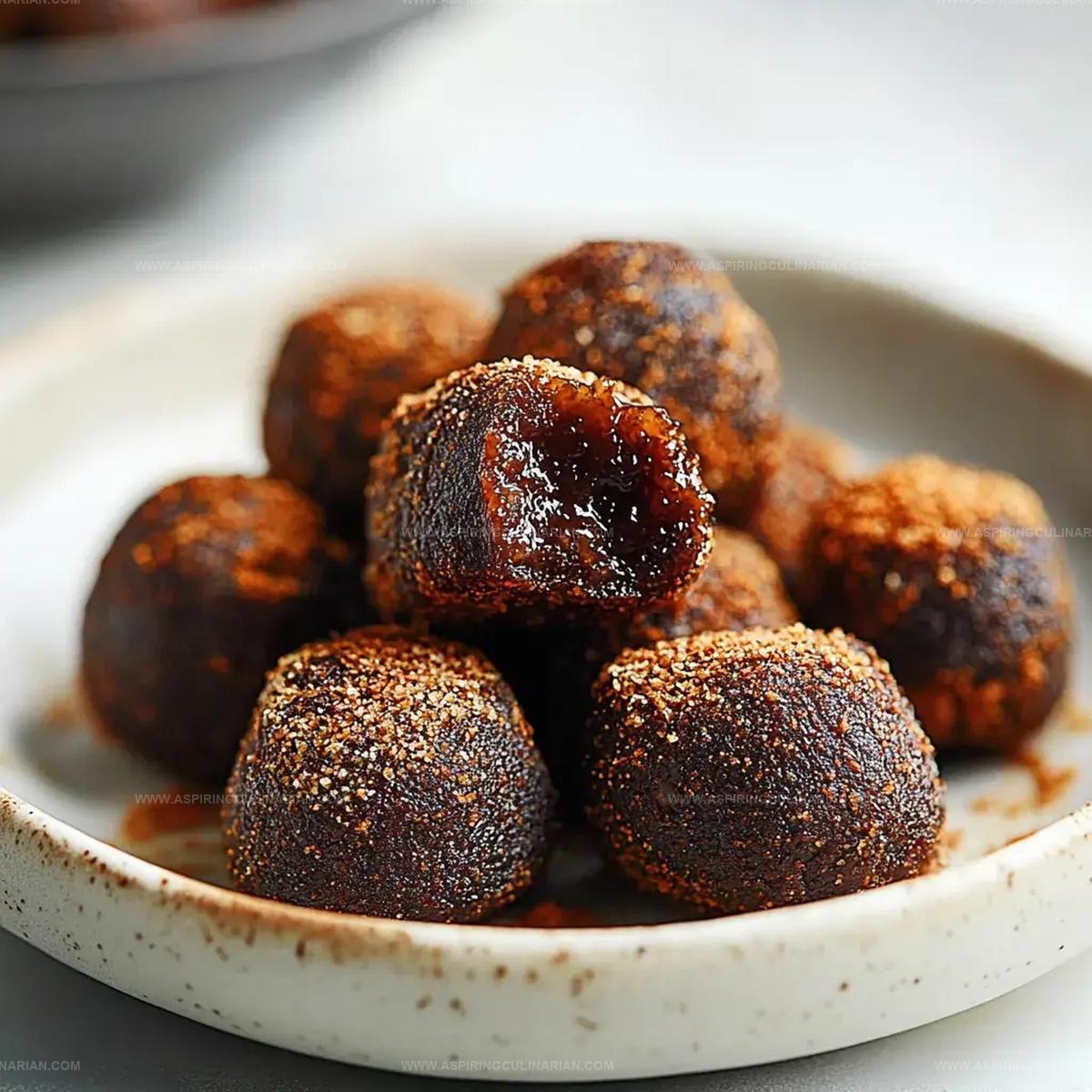
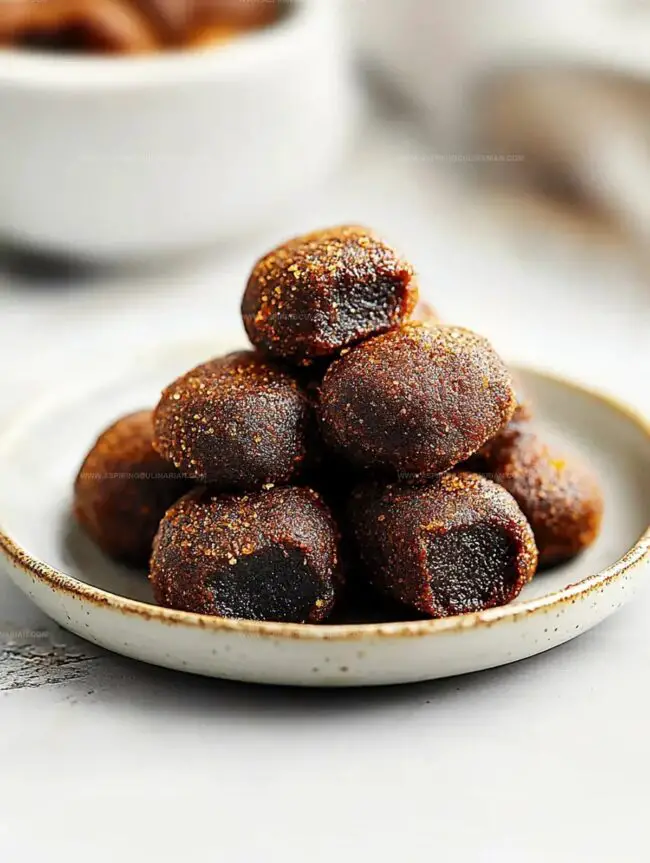
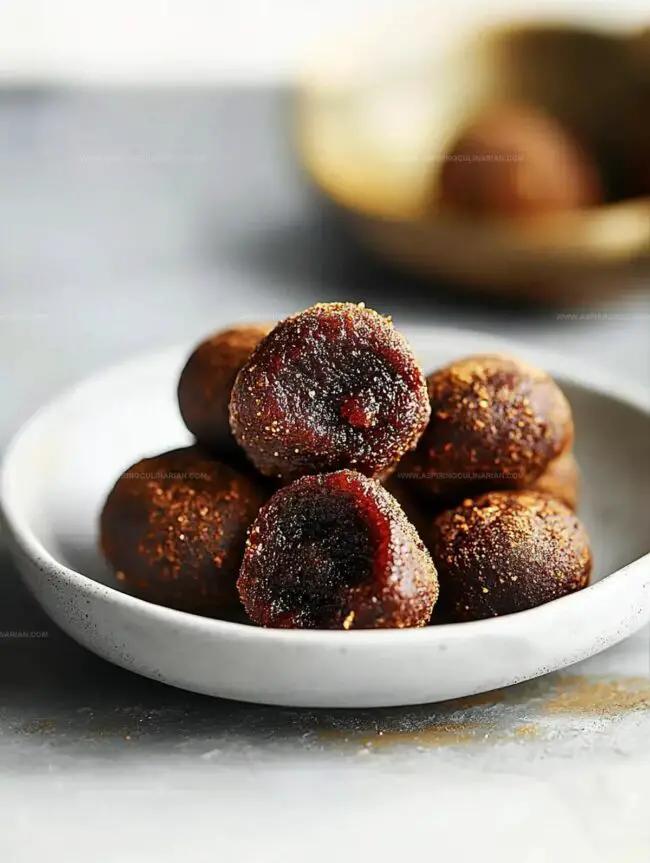
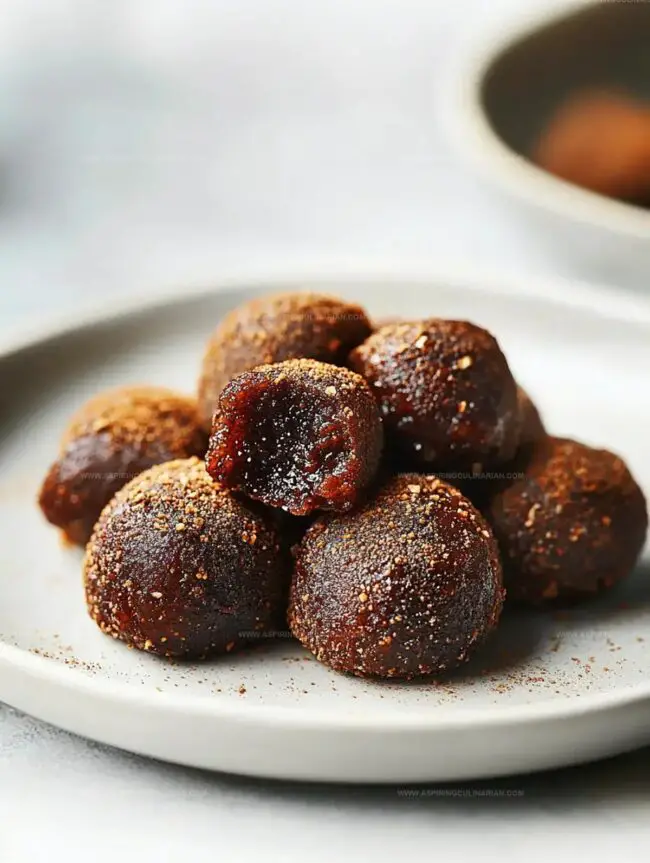
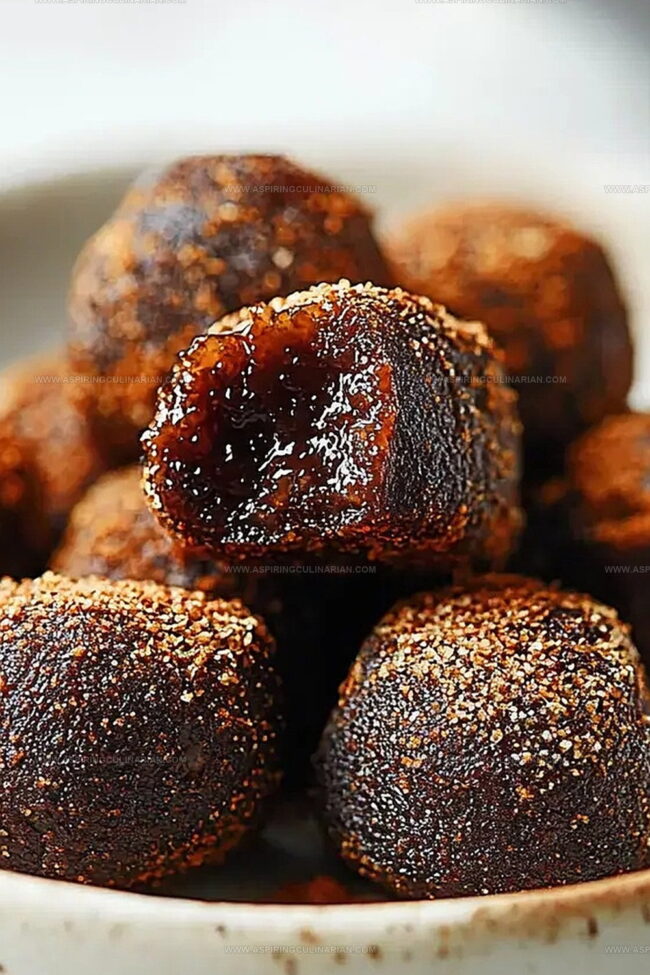
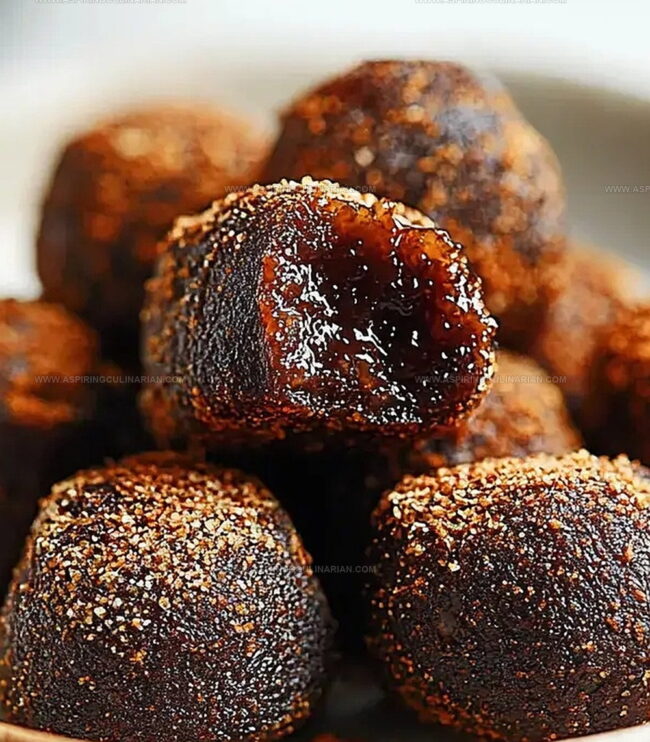
Lena Martinez
Contributing Writer & Culinary Educator
Expertise
Southwestern and Latin American cuisines, Vegetarian and plant-based recipe development, Culinary education and community outreach
Education
Santa Fe Community College, Santa Fe, NM
Certificate in Culinary Arts
Emphasized Southwestern cuisine and sustainable cooking practices
Lena grew up surrounded by the colors, spices, and traditions of the Southwest – flavors that sparked her love for bold, honest cooking. After earning her Culinary Arts certificate at Santa Fe Community College, she made it her mission to teach home cooks how to create flavorful, plant-powered meals without the fuss.
Her recipes are packed with vibrant ingredients, simple steps, and the kind of heart that turns a regular meal into something you’ll want to share. Outside the kitchen, Lena spends her time wandering farmers’ markets, trading family recipes, and helping young chefs find their voice through food.